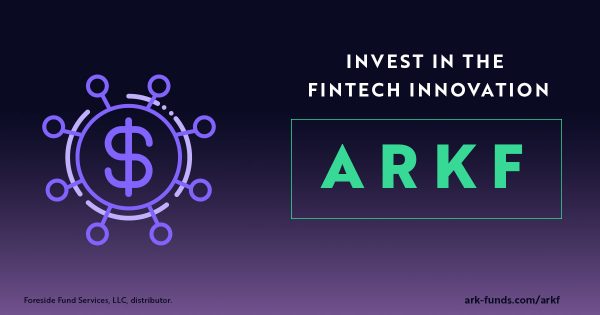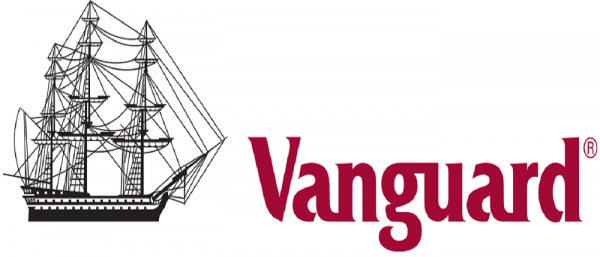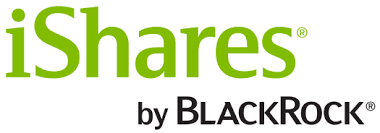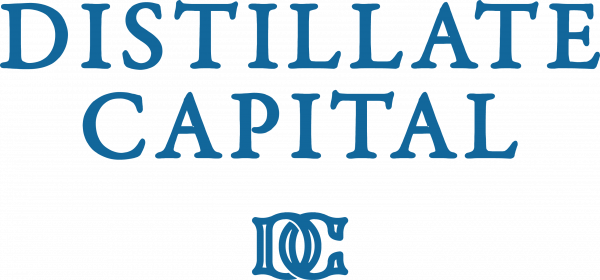Best Fintech ETFs in 2021
1. Global X FinTech ETF (FINX)
Global X FinTech is one of the pioneering FinTech ETFs, making it the oldest funds available worldwide. FINX has more than $1 billion in assets, capturing many businesses and companies in developed markets worldwide. It also generates the majority of its revenue from fintech sectors, including blockchain, crowdfunding, lending, mobile banking, online payment solutions, wealth management, and insurance. FINX is market-cap-weighted, skewing heavily in the United States at approximately 65%, succeeded by Australia’s 15%. Global X FinTech’s top 10 holdings include Fiserv, Intuit, PayPal, Square, and many other fintech companies. As of February 2021, it has 40 holdings and an expense ratio of 0.68%.
2. ETFMG Prime Mobile Payments ETF (IPAY)
This is a more exclusive fintech ETF that emphasizes mobile and online payment stocks. These stocks include payment infrastructure, solutions, services, and processing. With a narrow segment, IPAY is one of the most promising funds under the fintech sector. Specifically, ETFMG Prime Mobile Payments has more than $1 billion in assets. This FinTech ETF has a 0.75% fee. IPAY’s top 10 holdings include well-known companies like Discover, Square, Mastercard, American Express, and Visa.
3. ARK FinTech Innovation ETF (ARKF)
Led by Cathie Wood, ARK FinTech Innovation ETF (ARKF) generated more capital inflows in spite of the market’s status in 2020. As a whole, ARKF is a company primarily focused on “disruptive” businesses and processes. In 2019, ARKF launched and accumulated more than $4 billion in assets. According to ARKF, the fund captures the development of several products and services that are technologically enabled to overhaul and improve the way the financial industry operates. ARKF’s global exposure is completely different from FINX. It has a coverage of 65% in the United States; however, it is succeeded by Japan, Singapore, and Hong Kong. ARKF also differs in terms of its top 10 holdings. ARKF has more than 10% in Square while holdings, such as Shopify, Pinterest, Zillow, and PayPal, have 3% each. With a higher fee, ARKF has 0.75% when it comes to active management.
4. Tortoise Digital Payments Infrastructure Fund (TPAY)
Tortoise Digital Payments Infrastructure Fund is similar to IPAY; however, it equally weights its holdings. As a result, it’s not heavily skewed to major digital payment services like Mastercard and Visa despite them being in the Top 10 holdings. There is no other company that generates over 5% of the funds.
5. Vanguard Growth ETF (VUG)
Vanguard categorizes its stock holdings by their size. Its top companies include some of the world’s popular Big Tech, such as Facebook, Microsoft, and Apple. 45% of Vanguard’s total assets come from the Top 10 major holdings. This ETF provides investors with a straightforward, low-cost index fund with a focus on growth trends. As of February 2021, Vanguard Growth ETF approximately has 260 stocks, filtering the biggest companies/organizations on Wall Street with growth metrics. Although it may or may not be a challenge for growth-oriented investors eager for bigger returns in big companies, it’s still worth noting for newbie investors. If you’re planning to invest in affordable yet larger funds on a simplified platform, Vanguard Growth ETF is one of the best fintech ETFs you can purchase for 2021.
6. ARK Autonomous Technology & Robotics (ARKQ)
ARK Autonomous Technology & Robotics ETF (ARKQ) invests in companies that develop, manufacture, or facilitate space explorations, energy storage, 3D printing, automation, robotics, and autonomous transportation. ARKQ has around 30 to 50 holdings and includes 48 names as of February 2021. Its top ten major accounts have about 50% of the overall net assets, amounting to almost $3.33 billion. ARKQ’s top five big names include Google’s Alphabet (GOOGL/GOOG), Kratos Defence & Security Solutions (KTOS), Baidu (BIDU), Trimble (TRMB), and Tesla (TSLA). This ETF reached an all-time high in the midweek of February 2021, returning more than 130% within the previous year. Tesla has been a significant player within this ETF, contributing to more than 10% of the assets. As a result, the daily fluctuations in TSLA shares directly impact the prices of ARKQ. If there’s a price decline below $80, long-term investors can find better prices in the fund.
7. iShares ESG Aware MSCI USA ETF (ESGU)
ESG stands for environmental, social, and corporate governance, and these are the central focus points for the iShares ESG Aware MSCI USA ETF (ESGU). Given the shift towards such sustainability trends, ESGU is considered a frontrunner to ESG funds, generating $9.3 billion in influxes to date. ESGU monitors the MSCI USA Extended ESG Focus Index, which comprises mid- to large-cap stocks that MSCI has identified to be portraying positive ESG characteristics. The index has excluded major firms, such as tobacco companies and weapons manufacturers. Aside from that, ESGU’s accounts “may be involved in severe business controversies.” Similar to VOO, ESGU doesn’t have a perfectly balanced portfolio. It has 30% of its holdings in technology, and it has 3% exposure each for four other sectors in the market. Since the concept of a morally acceptable asset will differ from one investor to the other, some people might not agree with the nature of ESGU.
8. Distillate U.S. Fundamental Stability & Value ETF (DSTL)
Distillate U.S. Fundamental Stability & Value ETF (DSTL) doesn’t depend on P/S, P/E, and other forms of traditional value metrics. Instead, DSTL focuses on free cash flow divided by the company’s enterprise value. According to the co-founder and CEO of Distillate Capital Thomas Cole, the free cash flow profit is significantly more reliable than appraisals based on earnings. This is because many businesses and organizations report different categories of financial results. DSTL begins with 500 of the biggest American companies and eventually filters out the ones that are more expensive based on their volatile cash flows, high debts, and value. Hence, this fintech ETF includes a portfolio with heavier tech stocks (25%) in 2021 compared to its 2020’s 32% value. The healthcare and industrial sectors account for bigger junks of assets, both with 19% of the total assets.
9. Arrow Dow Jones Global Yield ETF (GYLD)
The Arrow Dow Jones Global Yield ETF (GYLD) is ideal for passive income seekers. GYLD provides you with a balanced exposure to five asset types around the world, such as sovereign debt, corporate debt, alternatives (MLPs or master limited partnerships and energy), real estate investment trusts (REITs), and equity. Arrow Dow Jones Global Yield has 150 holdings, with 30 from each asset type. GYLD monitors the Dow Jones Global Composite Yield Total Return Index with a quarterly balancing. This fintech ETF began trading in August 2012. Today, assets under its management are valued at close to $41 million.
Category Exposure to Asset Classes
Alternative: 20.12% Corporate Debt: 19.94% Equity: 19.63% Real Estate: 20.30% Sovereign Debt: 20.01%
Real Estate Investment Trusts
Charter Hall Retail REIT (CQR) Columbia Property Trust (CXP) Dexus (DXS) Hyprop Investments (HINVF) Klepierre (KLPEF)
Equities and Alternatives of GYLD
Kumba Iron Ore (KIROY) Yanzhou Coal Mining (YZCAY) Severstal’ PAO (SVJTL) DCP Midstream (DCP) NuStar Energy (NS) Shell Midstream Partners (SHLX)
When it comes to sovereign debt to Arrow Dow Jones Global Yield, countries like Turkey, South Africa, Peru, Panama, Mexico, Israel, Indonesia, Hungary, Colombia, Chile, and Brazil pay higher compared to other developed countries.
10. Industrial Select Sector SPDR Fund (XLI)
The Industrial Select Sector SPDR Fund (XLI)’s stock sensitivity to the global and U.S. economies has resulted in them being one of the heavily hit S&P 500 sectors during the bear market. It has fallen off 40% through March compared to the 31% for the previous year. It has steadily recovered since then, making XLI one of the investor’s and analyst’s favorite fintech ETF options for 2021. Although there aren’t many broad-sector alternatives, XLI is one of the biggest industrial ETFs that do the trick. XLI holds more than 70 industrial-sector stocks in the S&P 500. As a result, it skews towards large caps and since XLI is market-cap weighted, the largest stocks generate the largest weights. Honeywell has elevated to the Dow Jones Industrial Average for 5.7% of the overall assets. Although it’s a significant weight, it’s nothing worrisome. Boeing and Union Pacific are the next biggest stocks after Honeywell. If you’re more inclined towards diversifying your investment portfolio, you’ll enjoy heavy exposure to industrial conglomerates, machinery, aerospace, and defense. All aspects will benefit once the global economy gets running again. As XLI investors, you’ll also have decent-sized stocks in electrical equipment, air freight, and road and rail.
Bottom Line
With everything transacted online, the fintech industry is undoubtedly flourishing. Although it continues to yield state-of-the-art innovations and has a promising future, there are no fixed and predictable returns. As you may have already known, investing is a high-risk venture. Before you start investing your hard-earned money, make sure you do your own research and invest only what you can afford to lose.









